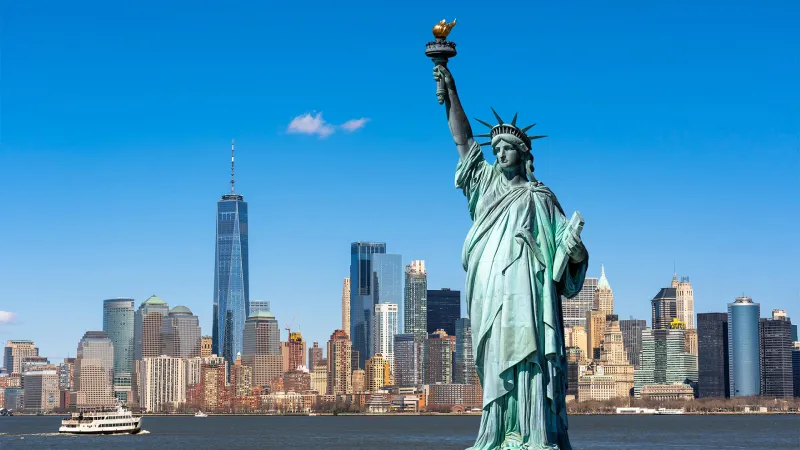Air quality is a major environmental health concern in New York City (NYC). It impacts the health of all people.
Many factors contribute to NYC’s air quality, including traffic, building emissions, and weather. These factors change from day to day, making it difficult to predict how bad the air will be.
Ozone
Ozone is one of the most common air pollutants in New York City and can contribute to health problems ranging from mild asthma to severe respiratory illnesses. It is also a key component of smog, which can be harmful for human health and the environment.
Particulate matter, another major source of ozone pollution in NYC, can be a challenge to manage as well. It includes small particles, including sand, dirt, dust, and organic chemicals.
PM2.5 concentrations in NYC are influenced by local emissions trends, such as transportation exhaust and industrial operations on the outskirts of the city, and wildfires. These patterns can affect the chemistry of PM2.5.
Nitrogen Dioxide
Nitrogen dioxide is a powerful oxidant that can be extremely toxic when it’s at high concentrations. Exposure to nitrogen dioxide has been linked to increased risk of lung disease, especially in infants and people with chronic obstructive pulmonary disease (COPD).
In New York City, NO2 levels are a leading indicator of air quality. Data from the largest urban air monitoring program of any U.S. city show that annual average levels of fine particulate matter (PM 2.5), nitrogen dioxide (NO2) and nitric oxide (NO) have declined 43%, 39% and 56%, respectively since 2009.
New York City has also been making significant strides in reducing NO2 emissions from power plants and cars. But NO2 is a key contributor to the formation of ozone, a dangerous gas that can cause respiratory problems such as asthma and bronchitis. As such, reducing NO2 is a critical step to improving New York City’s air quality.
Carbon Dioxide
Carbon dioxide is one of the greenhouse gases that trap energy in the atmosphere, warming the planet. It is formed through the burning of fossil fuels and through natural processes, including the decomposition of vegetation and volcanic eruptions.
The amount of carbon dioxide in the atmosphere is influenced by global temperature increases and by the varying amounts of CO2 that enter the earth’s atmosphere from different sources. Currently, the concentration of CO2 in the atmosphere is largely due to human-caused emissions.
It is a colorless, odorless gas that is formed in the combustion of carbon-containing materials or in fermentation. It is also produced in the respiration of animals and in photosynthesis of plants.
In the human body, it is mainly carried in arterial blood. It is then expelled from the lungs through the breathing system.
Particulate Matter
Particulate matter is air pollution that comes from a variety of sources, including vehicles, factories, construction sites, and wood burning. It contains a mix of dust, dirt, soot and smoke.
These particles are a serious health threat, especially for people who already have respiratory or heart problems. They can cause chronic bronchitis, asthma and irritate your airways.
There are different types of particulate matter: some are fine (PM2.5), others are coarser, and some are invisible to the eye (PM10). The size of these particles affects how they get into your body, and where in your body they can cause the most harm.
The levels of fine particulate matter in New York City’s air vary greatly depending on weather and the type of pollutant. The highest concentrations of PM2.5 are during periods when air is stagnant, like in the winter.








This article offers a fascinating perspective on the subject. The depth of research and clarity in presentation make it a valuable read for anyone interested in this topic. It’s refreshing to see such well-articulated insights that not only inform but also provoke thoughtful discussion. I particularly appreciated the way the author connected various aspects to provide a comprehensive understanding. It’s clear that a lot of effort went into compiling this piece, and it certainly pays off. Looking forward to reading more from this author and hearing other readers’ thoughts. Keep up the excellent work!
Great article! I appreciate the clear and insightful perspective you’ve shared. It’s fascinating to see how this topic is developing. For those interested in diving deeper, I found an excellent resource that expands on these ideas: check it out here. Looking forward to hearing others’ thoughts and continuing the discussion!
Great article! I appreciate the clear and insightful perspective you’ve shared. It’s fascinating to see how this topic is developing. For those interested in diving deeper, I found an excellent resource that expands on these ideas: check it out here. Looking forward to hearing others thoughts and continuing the discussion!
I really enjoyed this article. The analysis was spot-on and provided a lot of food for thought. It would be great to discuss this further. What did you all think?